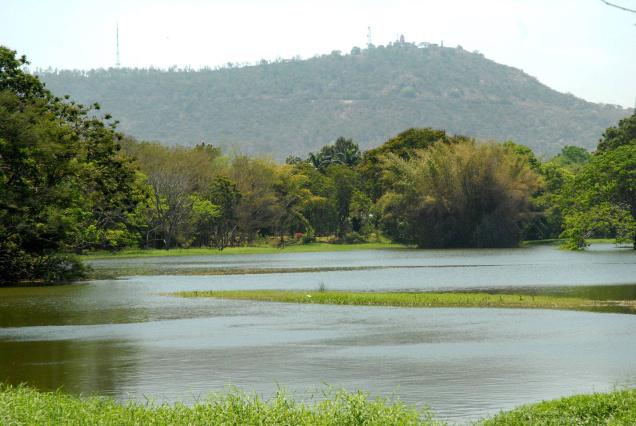|
The Hindu
20th December, 2012
As the focus of local authorities is gradually shifting towards sustainable management of urban water bodies, the authorities are stepping up efforts to contain sewage flow into Karanji lake, abutting Chamundi Hills here.

|
|
The Karanji Lake Nature Park is under the management of Mysore zoo. Being a major source of water for the zoo, the lake, which draws various species of birds for nesting every year, is yet to become “pollution free” though sewage flow has been checked to some extent in recent years. It can become the city’s first “contaminant-free lake” if sewage discharge from neighbouring localities such as Siddharthanagar is stopped completely. “The underground drainage (UGD) pipes need to be replaced with bigger diameter ones to handle the sewage flow. The pipes were laid long ago, in accordance with the population then, and they need to be replaced immediately to check sewage overflow into the lake,” said zoo executive director B.P. Ravi. He told The Hindu that the Mysore City Corporation’s Rs. 3.5-crore project to replace the UGD pipes was before the government for approval. “If the work gets cleared, sewage flow can be checked fully,” he said. Mr. Ravi said a team of officers from Zoo Authority of Karnataka, led by its chairman M. Nanjundaswamy, will soon meet Minister for Urban Development S. Suresh Kumar in Bangalore to apprise him of the need to expedite the project. Mr. Ravi said there were some natural springs, around 1 km from the lake, which was one of the sources of fresh water for the lake, besides rainwater. The springs too needed protection, he said and added that he would hold talks with MCC officials on this issue. The lake had also rejuvenated groundwater in the area where several institutes, mounted police unit and residential localities were located. As for removing silt from the lake, he said the management had proposed to collect silt entering the lake from the storm-water drains. “There are some machines to extract silt collected in drains. We will first examine whether the silt can be mixed with compost produced by the zoo.” The composting unit is being shifted to the lake premises from the zoo, he said.